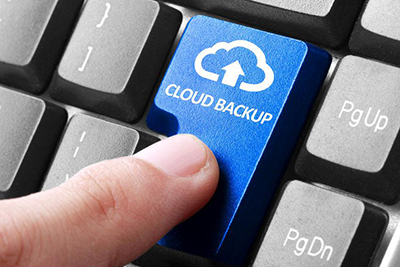When it comes to disaster recovery (DR) and business continuity capabilities, a business’s cyber resilience can mean the difference between staying up-and-running and being completely shut down during a disaster.
A comprehensive disaster response as-a-service strategy (DRaaS) is a critical factor in your organization’s cyber resiliency. To maintain functionality and avoid extensive downtime during a natural, human, or hardware disaster, a disaster response plan will first identify which essential functions a business can live without—and for how long. Effective DRaaS planning will help your business outline how being without critical data will affect your customers, your revenue, and ultimately, your business’s future.
The Dangers of Not Having a DR Plan For Your Business
 According to a recent study by the Disaster Recovery Preparedness Council, 3 out of 4 companies are failing at disaster preparedness—and more than 60% of businesses surveyed do not have a comprehensive DR plan in place. Another 40% of surveyed organizations revealed that the DR plan they did have was ineffective when it was put into action during a crisis. The Disaster Recovery Preparedness Council reports that over the last year:
According to a recent study by the Disaster Recovery Preparedness Council, 3 out of 4 companies are failing at disaster preparedness—and more than 60% of businesses surveyed do not have a comprehensive DR plan in place. Another 40% of surveyed organizations revealed that the DR plan they did have was ineffective when it was put into action during a crisis. The Disaster Recovery Preparedness Council reports that over the last year:
- More than 36% of businesses lost at least one critical application, critical data file, or VM for hours at a time.
- 20% of business losses related to data disasters ranged from $50,000 to more than $5 million.
- More than 65% of companies fail their own disaster response testing.
To get a better idea of how losing your valuable business applications or critical data might affect your business, consider this: if your system was compromised and became inaccessible, could your business still provide its products and services? Would it take days, weeks, or months to restore your data center in the event of catastrophic failure?
A Disaster Response Strategy For Small And Mid-Sized Businesses
In order to survive and thrive in an increasingly volatile cybersecurity climate, businesses must have a robust, agile, fully tested DR plan in place. The DR Preparedness Council recommends that businesses take the following steps to ensure business continuity during a disaster:
- Create a DR plan that includes networks, applications, document repositories, and business services.
- Define your Recovery Time Objectives and Recovery Point Objectives to keep business continuity expectations in line with reality.
- Test your critical applications in light of your DR plan and where possible, automate the process.
Follow these best practices to create and implement an effective disaster response plan for your small and mid-sized business:
1. Analysis
Define your business’s Recovery Time Objective and Recovery Point Objective.
- Recovery Time Objective (RTO): Analyze the duration of time that your critical business processes must be restored after an incident or disaster in order to avoid catastrophic business interruption or data loss. RTO can include the time it takes to fix the issue, the recovery time itself, and public relations or fall-out control.
- Recovery Point Objective (RPO): Define the maximum targeted timeframe in which data could be lost or destroyed due to an incident or breach—and how long you are willing to tolerate any related downtime. For example, if your RPO is three hours, then off-site backups must be continuously (rather than once daily) conducted to meet that objective.
2. Setting Goals
 Consider your DR strategy’s goals when creating and defining your business impact analysis.
Consider your DR strategy’s goals when creating and defining your business impact analysis.
- What are the goals for day-to-day operations, and how can risk be minimized?
- What are your business’s realistic response and recovery goals? (Time, Speed, DR Capabilities)
- What is your organization’s DR budget?
- Test critical apps to determine whether they will recover within your RTO/RPO goals.
3. Control Measures
An effective DR plan will consider prevention, detection, and corrective measures to make Recovery Time Objective and Recovery Point Objective goals a reality.
Preventative Measures:
- Anti-malware and anti-virus software
- Comprehensive, multi-level backup to help lessen the consequences of a ransomware attack
- Anti-spam, anti-phishing settings
- Education of employees in recognizing phishing and social engineering attacks
- Encourage password best-practices
Detective Measures:
- Deploy a unified Incident Response (IR) platform integrated with a security information and event management tool (SIEM) for effective and advanced threat detection.
Corrective Measures:
- Utilize backup and restore to get business systems back online as quickly as possible following an attack.
4. Implementation
A comprehensive cloud-based DRaaS platform allows you to implement the elements in your DR and Business Continuity plan. When deciding upon a DRaaS platform, consider the following before signing on the dotted line:
- Physical Location & Security: Is the off-site data center secure?
- Service Level Agreements: Do they have your business’s best interests at hand?
- Configuration & speed of deployment: Can the platform be easily integrated into your current applications and processes? Will it take hours, days, or weeks to fully integrate?
- Available training and education of staff: Will you get the support you need to get the most from your DRaaS platform?
5. Testing
According to the Disaster Recovery Preparedness Council’s report, one in four businesses never test their DR plans—and one-third test only once or twice a year. To achieve successful cyber resilience that ensures your business will be up-and-running quickly following an incident or disaster, testing of your DR plan should occur frequently, regularly, and thoroughly.
Testing should occur in a real-life simulation of actual disaster conditions, utilizing all staff in their appropriate incident response roles and capacities. Where possible, it should be conducted by a third party and/or automated process.
Consider utilizing a dedicated DRaaS platform to manage disaster response implementation and testing so you’ll consistently know where you stand with respect to your organization’s overall disaster response and cyber resiliency. When you work with SCC, your DRaaS consultant will collaborate with you to design a cyber security solution that suits your business’s unique needs, is flexible and scalable, and cost-effective to keep your business up-and-running and with minimal downtime during and after a disaster.
















nice work, keep up the good work.